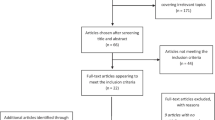Abstract
The question of driving ability arises frequently in the treatment of brain-damaged patients. In the majority of patients, neuropsychological tests of psychophysical functions that are relevant for driving are necessary, in addition to the examination of medical risk-factors. In all cases of questionable driving ability, these examinations should be complemented by a comprehensive on-road driving test. The procedure recommended for the assessment and judgement of driving ability is detailed and illustrated by means of a flowchart. Furthermore, the results of an empirical study of driving ability in 196 brain-damaged patients are presented. All patients underwent a 90 min on-road driving test in public traffic, in addition to the medical and neuropsychological examination. Attempts to predict the outcome (pass/fail) of the driving test by discriminant analysis based on neuropsychological test results and clinical parameters were disappointing. Although 85% of the patients classified as “pass” actually passed the driving test (high positive predictive value), only 40% of those patients classified as “fail” actually failed the driving test (low negative predictive value). It is argued that the unsatisfying predictive value of the neuropsychological testing can be explained by the fact that the actual driving behavior is a rather complex skill that is essentially determined by strategic and tactic abilities and decisions and only in part by those operational skills reflected in the psychometric tests usually employed in traffic psychology. The results of a preliminary follow-up study with 21 patients support the notion that braindamaged subjects do not present a higher risk in driving.
Zusammenfassung
Bei Patienten mit zerebralen Erkrankungen muss häufig die Frage der weiteren Fahreignung geklärt werden. Neben der Prüfung medizinischer Risikofaktoren ist meist auch eine neuropsychologische Untersuchung verkehrsrelevanter psychophysischer Leistungen vorzunehmen, die in Zweifelsfällen durch eine Fahrverhaltensprobe ergänzt werden muss. Der Prozess der Fahreignungsbeurteilung wird anhand eines Flussdiagramms dargestellt. Die theoretischen Erwägungen werden durch die Ergebnisse einer Fahreignungsprüfung bei 196 neurologischen Patienten ergänzt. Der Versuch, die Patienten mit bestandener und nichtbestandener Fahrprobe auf der Grundlage neuropsychologischer Testleistungen und klinischer Parameter zu unterscheiden, brachte kein befriedigendes Ergebnis. Gute Testleistungen machen zwar ein Bestehen der Fahrprobe sehr wahrscheinlich, jedoch bestehen auch mehr als die Hälfte der Patienten mit mangelhaften Testleistungen die Fahrprobe. Die geringe Übereinstimmung zwischen der praktischen Fahrfähigkeit und den Testleistungen wird anhand eines komplexen Modells des Fahrverhaltens erklärt. Die Resultate einer ersten Follow-up-Untersuchung bei 21 Patienten sprechen dafür, dass die Teilnahme hirngeschädigter Patienten am Straßenverkehr nicht mit einem erhöhten Risiko verbunden ist.
Similar content being viewed by others
Literatur
Anderson SW, Rizzo M, Skaar N, Stierman L, Cavaco S, Dawson J, Damasio H (2007) Amnesia and driving. Journal of Clinical and Experimental Neuropsychology 29:1–12
Bundesanstalt für Straßenwesen (Hrsg) (2000) Begutachtungs-Leitlinien zur Kraftfahrereignung. Bericht der Bundesanstalt für Straßenwesen. Mensch und Sicherheit, Heft M 115. Wirtschaftsverlag NW, Verlag für neue Wissenschaft, Bremerhaven
Bundesgesetzblatt (1998) Verordnung über die Zulassung von Personen zum Straßenverkehr und zur Änderung straßenverkehrsrechtlicher Vorschriften. Teil I Nr: 55. Deutscher Bundes-Verlag
Duchek JM, Carr DB, Hunt L, Roe CM, Xiong C, Shah K, Morris JC (2003) Longitudinal driving performance in early-stage dementia of the Alzheimer type. Journal of the American Geriatrics Society 51:1342–1347
Fries W, Netz J, Bötzel K, Steinhoff B, Hartje W, Lachenmayr B (2005) Leitlinie zur Beurteilung der Fahreignung bei neurologischen Erkrankungen. Aktuelle Neurologie 32:342–350
Hannen P, Hartje W, Skreczek W (1998) Beurteilung der Fahreignung nach Hirnschädigung. Neuropsychologische Diagnostik und Fahrprobe. Nervenarzt 69:864–872
Katz RT, Golden RS, Butter J, Tepper D, Rothke S, Holmes J, Sahqal V (1990) Driving safety after brain damage: Follow-up of twentytwo patients with matched controls. Archives of Physical Medicine and Rehabilitation 71:133–137
Kaußner Y, Mark C, Krüger HP (2006) Fahrsimulation als Werkzeug bei neurologischen Patienten. Kongress Neurochirurgie und Neurorehabilitation im Dialog. Deutsche Gesellschaft für Neurorehabilitation (DGNR) und Deutsche Gesellschaft für Neurochirurgie (DGNC). Bochum, 09. – 11. November
Michon JA (1978) Dealing with danger. Unveröffentlichtes Manuskript. State University, Traffic Center, Groningen, Niederlande
Wolbers T, Küst J, Karbe H, Netz J, Hömberg V (2001) Interaktive Fahrsimulatoren – ein neuer Weg zur Diagnose und Rehabilitation der Fahrtauglichkeit. Die Rehabilitation 40:87
Author information
Authors and Affiliations
Corresponding author
Rights and permissions
About this article
Cite this article
Niemann, H., Hartje, W. Neurokognitive Funktionen und Fahreignung. Z. Epileptol. 20, 184–196 (2007). https://doi.org/10.1007/s10309-007-0276-7
Received:
Accepted:
Issue Date:
DOI: https://doi.org/10.1007/s10309-007-0276-7




